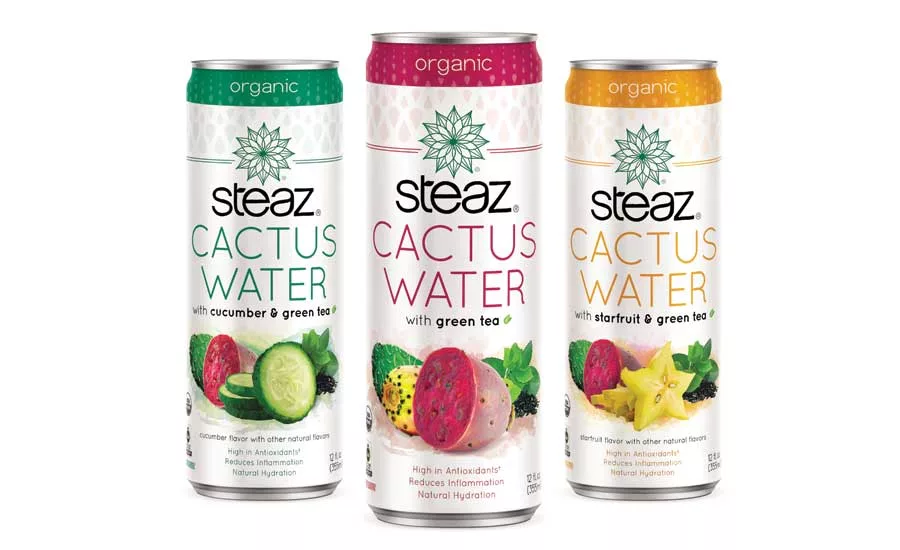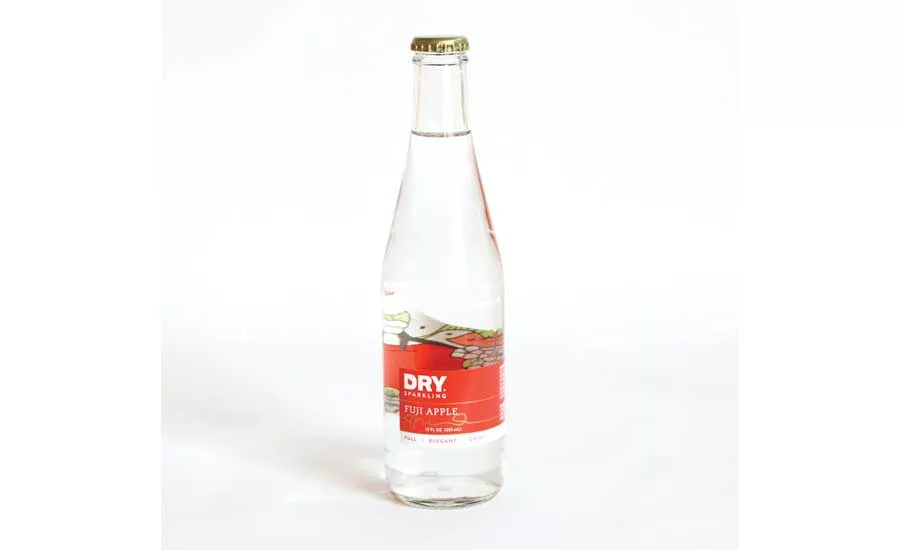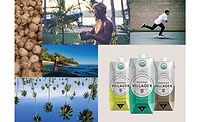Functional beverage trends impacting flavors
Consumers still enjoy indulgent flavors



Pantone is well known for releasing its annual Color of the Year. For the first time, the company introduced two color shades — Rose Quartz and Serenity — as the 2016 Pantone Colors of the Year. Both softer colors, Pantone explains that the colors were chosen for their balance between the warming embrace of a rose tone complemented by the cooler yet tranquil tone of the soft blue shade. Although releasing the Color of the Year typically results in an influx of fashion trends surrounding the color or colors, flavor trends are not as clear-cut. Ingredient suppliers note that beverage-makers are more concerned about selecting flavors that complement macro trends instead of looking for the hottest “it” flavor.
“What is apparently different and noticeable this year is that companies developing new food and beverage products are less concerned about what the ‘newest in flavor’ will be that will interest the consumer,” says Anton Angelich, group vice president of marketing for Virginia Dare, Brooklyn, N.Y. “They see less of a shift from previous years in new flavors appearing that can drive larger new product opportunities. They are largely focusing on ‘getting the product right.’”
Among the trends that Angelich says are influencing flavor selection are natural and organic, sustainability, reduced fat and sugar, better-for-you, efficacious function-based ingredients, weight management, and transparency.
Another concept that beverage manufacturers are considering in their new product development is clean/simple labels. “Products not having more than few ingredients, all ingredients being recognizable and not having anything listed on the label that your grandmother would not know what it is,” Angelich explains.
Nina Hughes-Likins, senior marketing manager for Wauconda, Ill.-based Synergy Flavors, also notes the importance that clean label and health and wellness are playing in the food and beverage sectors.
“It’s unlikely any food or beverage manufacturer can escape the omnipresent consumer demand for all things natural, organic, non-GMO, free-from, gluten free, low sugar and minimally processed,” she says. “Due to the consumers’ appeal, manufacturers are now opting to change their ingredients to reflect a clean label. Flavor companies are not exempt to the shift, for all-natural, non-GMO, organic and organic-certified flavors [are] experiencing a significant surge in requests this past year.”
Meghan Patton, associate marketing and consumer insights manager for Philadelphia-based David Michael & Co., echoes similar sentiments. “More than ever before, consumers are paying close attention to what goes into their food and beverages,” she says. “The focus is more on foods rich in natural health benefits, with consumers reverting back to whole, naturally functional food and beverages and moving away from heavily processed food and beverages. In flavors, we’re seeing more natural and organic flavor requests, as well as requests for more authentic flavor profiles.”
However, these healthier beverage offerings do not mean that consumers are willing to sacrifice taste. As such, formulators are looking to blend the best of both worlds — products that meet health-and-wellness trends and still taste great.
“There is a growing demand for ingredients that are healthier, beverages that deliver health benefits and an aversion to ingredients that are perceived as unhealthy, whether those perceptions are scientifically valid or not,” says Dale Streit, director of flavor development for California Custom Fruits & Flavors (CCFF), Irwindale, Calif. “A healthier beverage doesn’t often make for a better tasting beverage. Some flavoring ingredients could clash with some of the beverage ingredients and some of the beverage ingredients might need masking. There is a need for flavors specifically tailored to some of these products to keep them consumer friendly.
“Stevia, proteins, vitamins and other functional ingredients can present challenges to product developers that need to be overcome,” he continues. “Consumers want healthier products, but most don’t want to sacrifice taste. They want the best of both worlds, but according to consumer surveys, the most important factor overall impacting sales still is taste.”
Gabby Quintana, research chef and mixologist for Hunt Valley, Md.-based McCormick & Co., notes that this macro trend has become a balance of “taking out the bad” and “adding the good,” and explains that flavors are doing less masking off-flavors, but instead are preserving unique, fresh flavors.
“Because of the ‘removing anything unnatural’ surge, flavors that naturally stay ‘preserved’ are becoming more prevalent,” he says. “Drinks like kombucha, switchels, shrubs, barrel-aged cocktails/mocktails/beers/punches that have preserved items already as part of the profile are really getting pushed to the forefront.”
This push for natural products also is impacting the flavor market, according to experts.
“Due to the ongoing health craze, flavor trends have simplified to nature’s ‘healthy’ ingredients such as honey, maple, domestic and exotic fruits, vegetables, nut, coffee, tea and floral flavors,” says Megan Trent, marketing coordinator for Gold Coast Ingredients (GCI), Commerce, Calif. “As the medicinal health trend escalates, we are also seeing an increase in flavors with herbal and spice characteristics. Trending flavors include black currant, dragon fruit, Asian pear, blood orange, gooseberry, peach-mango, watermelon, guava, ginger, cold-brew coffee, hibiscus, elderflower, cucumber, kale and turmeric flavors.”
These flavors can play in a number of categories in both the traditional and alternative beverage segments, Trent notes.
“These simple, yet popular, flavor profiles complement flavored waters, coconut water, natural energy drinks, naturally sweetened carbonated beverages, juices, teas, coffees and other nutraceutical beverages,” she adds.
‘All work and no play’
Although better-for-you and health-and-wellness trends have helped give natural, authentic flavors a resurgence, consumers still want to satisfy their sweet tooth, and beverage producers are finding more and more flavor combinations to fulfill that need state.
“Despite the shift toward healthier, lighter beverages, consumers are still treating themselves,” David Michael’s Patton says. “Aside from health and wellness, flavor adventure is also a macro trend in beverages and indulgent flavors fall under the ‘adventure trend’ umbrella. We’re seeing nostalgic comfort food flavors, sweet and savory, chocolate with a twist and dessert-inspired flavors. In fact, dessert-inspired flavor activity is flourishing across all categories as consumers turn to flavors to satisfy their cravings for comfort and indulgence.”
GCI’s Trent also notes the role that classic indulgent flavors play within beverages, but adds that beverage-makers are not limiting themselves to those options.
“Indulgent flavor trends stem from both traditional treats and unique flavor creations,” she says. “Traditional favorites include chocolate brownie, vanilla ice cream, salted caramel, chocolate and peanut butter, chocolate mint, birthday cake, red velvet cake, mocha, cinnamon bun, caramel coffee, chocolate chip cookie dough, cookies n’ crème, snickerdoodle, churro, and pumpkin pie flavors.
“Creative trends include coffee and cookies n’ crème, cookie butter, glazed doughnut, hortchata and dulce de leche, vanilla green tea, and caramel waffle cone,” Trent continues.
Also listing pumpkin spice, eggnog, red velvet, salted caramel, Virginia Dare’s Angelich says tiramisu and caramel macchiato also are popping up in the market. These flavors have seen a proliferation within the ready-to-drink (RTD) coffee market and dairy-alternative beverages, such as almond milk. “Creamers have had indulgent flavors for some time, including associations with branded liqueurs,” he adds. “Flavor offerings in this category continue to expand.”
The beverage alcohol market is another area where indulgent flavors have found a sweet spot, experts note. “Alcohol has seen an enormous amount of growth in indulgent flavors offered from vodka to whiskey to malt beverages, flavors like s’mores, gingerbread, toasted graham, smoky butterscotch, caramel waffle cone, salted caramel, and pumpkin spice and banana bread,” Synergy’s Hughes-Likins says.
However, indulgence is not the only flavor trend in which alcohol beverages are seeing a flurry of new product development. Flavor suppliers are receiving a variety of flavor combination requests when it comes to these products.
“Consumers are interested in hot, spicy flavors driven by a surge in ethnic cuisine,” Hughes-Likins explains. “Flavors like grapefruit jalapeño flavored vodka, hot monkey hot pepper flavored vodka and California small-batch habañero vodka. Coffee has also been extremely popular in alcohol beverages.
“Sophisticated flavors like salted caramel rum and coffee liqueur, hazelnut espresso vodka [and] coffee rum are adding new dimension to spirits,” she continues. “Cold-brew specialty drinks like nitro brut with Grand Marnier; simple syrup, nitro cold-brew coffee and a Champagne topper are also quite popular and will continue to emerge.”
As hard sodas and ginger brews garner more attention from consumers, ingredient suppliers also are seeing an increase in requests for spice and herb flavors. “Both craft and commercial beer companies have been innovative with new spice combinations,” GCI’s Trent says. “Common spice flavors found in beers include cinnamon, nutmeg, cardamom, grains of paradise, ginger, all-spice, pumpkin spice and saffron. Beers are also trending with citrus, tart berry, chocolate and coffee notes, as well as spicy beers utilizing chilies from around the world.”
CCFF’s Streit notes that the palettes of alcohol consumers have become more sophisticated, which is impacting how brand owners develop new products.
“Correspondingly, flavors for these applications need to have greater sophistication,” he says. “This is partly due to the craft cocktail movement that has been around for a number of years and has eventually influenced more mainstream markets. Also, flavored beers were once few and far between, but that industry has seen recent movement toward [a] greater acceptance of the use of flavors.”
When it comes to macro trends, David Michael’s Patton explains that no category is immune. Yet, alcohol beverages traditionally are among the first to experiment with the latest in flavor trends.
“Flavor trends often can be seen first in alcoholic beverages and eventually trickle down into other beverage categories,” she says. “The most buzzworthy flavor trends happening in alcoholic beverages right now include borrowing from other categories (i.e., coffee, tea, desserts and savory), ethnic and exotic flavors and culinary- or craft-inspired flavors. We’re seeing more high-quality retail products with complex flavor combinations and premium ingredients. Barrel-aging and smoked are still hot trends, but they are moving beyond the dark spirits.”
When it comes to natural and organic flavor trends, alcohol beverages have lagged behind non-alcohol beverage categories. However, that seems to be changing, according to ingredient suppliers.
“We are starting to see the emergence of a section of the alcoholic beverage category that is catering to the natural- and organic-focused consumer,” Virginia Dare’s Angelich says. “Organic and bio-sustainable wines, and organic, flavored vodkas are taking hold in the marketplace. With great consumer pull and interest in the organic and natural category, other alcoholic beverages are sure to take hold.”
Artisanal drive
Whether its alcohol or non-alcohol beverages, the increasing interest in craft has caused local flavors to perculate.
Ed McIntosh, marketing manager at Flavorchem, Downers Grove, Ill., notes that beverages that have an artesian/homemade taste are having an impact on the flavors market.
Contributing to the artisanal flavors, McCormick’s Quintana says this trend stems from consumers who want the best for themselves, the local community of farmers and the environment — even if it means paying extra. “The local and the artisan really get a boost here,” he says. “Having more people aware of great local flavors makes it fun to explore.”
One category that has seen an influx of these flavors is carbonated soft drinks (CSDs). “The carbonated beverages category is currently experiencing the most substantial flavor makeover of all the beverage categories,” David Michael’s Patton says. “CSDs are innovating with less sugar and more healthy, artisanal and premium ingredients. This translates to more authentic and culinary-inspired flavors. Think true-to-fruit flavors, fruit-and-vegetable combinations, herbs, botanicals and spices.”
Healthy future
As American consumers continue to put a higher precedence for products that offer a solution for a healthy lifestyle, flavor suppliers will be tasked with ensuring that they can meet those needs with beverage-makers.
“Healthy energy has hit the market utilizing functional ingredients like beet juice for energy, which has been linked to higher nitric acid levels in the blood, which enhances exercise performance, endurance and lessens fatigue,” Synergy’s Hughes-Likins says. “Many other innovative blends like turmeric and matcha, combined for a positive inflammation response, boosting the body’s natural defenses and supporting flexibility, have been steadily growing in the natural products markets.”
Although these products have found a consumer base, CCFF’s Streit says we’ve only scratched the surface.
“I believe there will be more of the same as ‘better-for-you’ and ‘health and wellness’ are trends that have not yet reached full maturity and will continue to grow and become more integrated into mainstream products,” he says. “I also think the increased diversity of flavor styles and types is here to stay, but, as is true in in all trends, there will be shakeout and many will fall by the wayside in the scramble for market share.
“Fresh juices with their variety of blends are very popular in urban areas and cold-pressed juices are getting more space on suburban supermarket shelves,” Streit continues. “They will continue to increase their influence on other categories as well. Although the volumes will never even begin to approach that of fruit flavors, the number of requests for vegetable flavors will increase to be used as blenders with fruits; e.g., cucumber/ watermelon, strawberry/ rhubarb, etc. Flavor companies will need to supply low-volume vegetable flavors in addition to the more profitable high-volume fruit flavors to customers.”
Looking for a reprint of this article?
From high-res PDFs to custom plaques, order your copy today!







